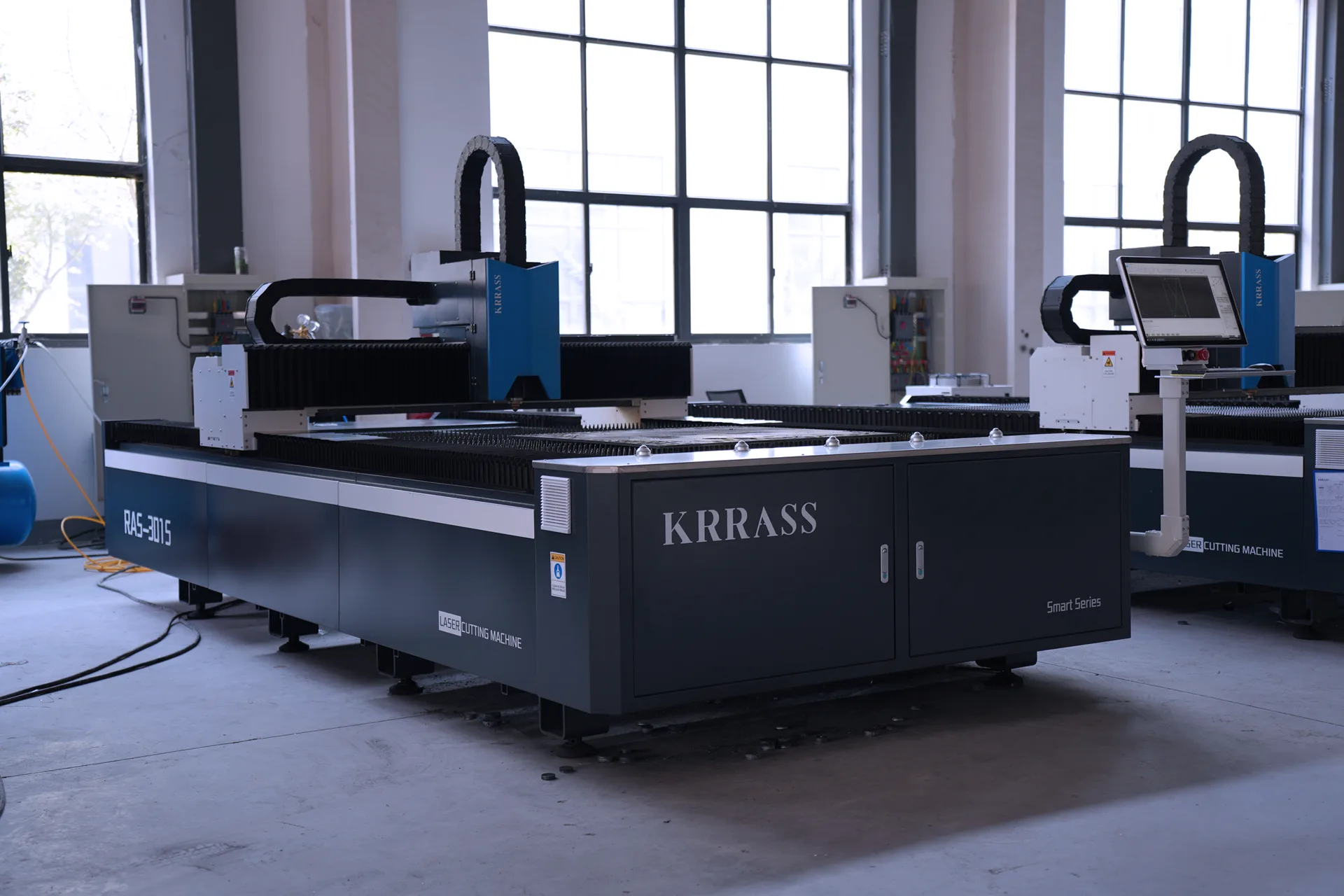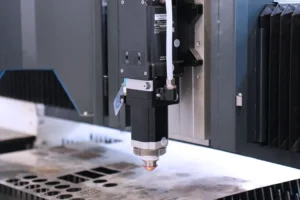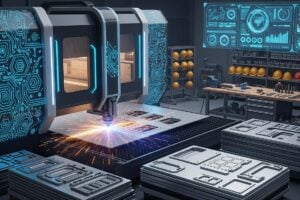Industrial metal fabrication is entering a new era in 2026. Global competition, higher quality requirements, rapid prototyping, customized production, and the push toward digital factories are accelerating the adoption of CNC laser cutting machines across all sectors—from sheet metal workshops to aerospace plants. As manufacturers continue replacing CO₂ lasers, plasma cutters, and mechanical shears, fiber laser cutters have become the new standard for speed, accuracy, energy efficiency, automation potential, and versatility with all major metals.
Choosing the right CNC fiber laser cutting machine is no longer simply a matter of comparing wattage or machine dimensions. Today, buyers must evaluate an interconnected ecosystem: laser sources, cutting heads, CNC controllers, automation systems, structural rigidity, maintenance requirements, software intelligence, and—perhaps most importantly—after-sales support. With dozens of global brands competing aggressively, the question remains:
Which CNC fiber laser cutting machines truly lead the industrial market in 2026?
This comprehensive guide evaluates the top-performing systems from China and Europe, focusing exclusively on machines designed for carbon steel, stainless steel, aluminum, brass, copper, titanium, and alloy metals. No hobby engravers, desktop lasers, acrylic cutters, or CO₂ craft machines are included. Every model listed here is a heavy industrial solution capable of 24/7 production.
Whether you operate a fabrication workshop, a metal products factory, an OEM production line, or a contract manufacturing business, this ultimate 2026 guide will help you make an informed investment.
Table of Contents
Why CNC Laser Cutting Machines Dominate Modern Metal Fabrication
Before diving into specific machine recommendations, it is important to understand why fiber laser technology has become the global standard. The advantages are dramatic and measurable across all performance categories.
1 Superior Cutting Speed
Fiber lasers deliver extremely high photon density, allowing cutting speeds far beyond CO₂ systems—especially on thin and medium-thick sheets. For example:
- A 3000W fiber laser can outperform a 6000W CO₂ laser
- A 12000W fiber laser can cut stainless steel at more than 4x the CO₂ speed
In industries where throughput equals profit, speed is a decisive competitive advantage.
2 Outstanding Cutting Quality
Fiber lasers produce a very narrow kerf, extremely high precision, and smooth edges with minimal post-processing.
Benefits include:
- Lower burr levels
- Reduced grinding time
- No mechanical deformation
- Tight dimensional tolerances
Consistent quality is crucial for industries such as automotive, aerospace, medical devices, and precision enclosures.
3 Low Operating Costs
Fiber lasers consume far less electricity and require minimal maintenance. They eliminate the need for:
- Resonator maintenance
- Reflective mirror replacement
- CO₂ gas consumption
This makes fiber laser cutters dramatically more cost-efficient in long-term use.
4 High Material Compatibility for Metals
Fiber lasers excel in cutting all major industrial metals:
- Carbon steel
- Stainless steel
- Aluminum & aluminum alloy
- Galvanized steel
- Brass & copper
- Titanium & nickel alloys
These materials dominate modern manufacturing, making fiber lasers the universal solution.
5 Automation-Ready for Smart Factories
Fiber laser cutters can easily integrate:
- Automatic loading/unloading systems
- Robotic arms
- Intelligent nesting software
- Production line MES systems
- Real-time monitoring and IoT reporting
As Industry 4.0 continues expanding, automation-ready machinery is essential.
Key Criteria for Choosing an Industrial Fiber Laser Cutting Machine in 2026
Understanding the core evaluation factors helps buyers identify which machine best fits their operational needs.
1 Laser Power Selection (1.5kW–20kW)
Your materials and thickness determine the correct power:
- 1500W–3000W – Light to medium fabrication
- 6000W–12000W – High-speed mass production
- 15000W–20000W – Heavy plate cutting
Most modern factories now purchase 6kW or above to ensure long-term competitiveness.
2 Machine Bed Structure & Rigidity
A stable bed ensures precision at high speed. High-end machines use:
- Reinforced welded bed frames
- Stress-relieved annealing
- Segmented honeycomb or pipe-in-pipe structures
A poorly built machine bed results in vibration, poor accuracy, unstable cutting head height, and reduced machine life.
3 CNC Control System
Top systems include:
- FSCUT 2000E / 3000
- Siemens
- Beckhoff
A strong controller ensures smooth motion, stable processing, and precise auto-focus.
4 Industrial Automation Capabilities
Automation becomes crucial when processing over 500 kg/day.
Look for:
- Auto nozzle changer
- Auto lubrication
- Dual exchange table
- Automatic pallet changer
- Robotic loading/unloading
- Automated warehouse integration
5 After-Sales Service & Global Support
Fiber laser machines depend on high-tech components.
Factories require:
- Local engineers
- 24/7 online support
- Spare parts availability
- On-site installation & training
- Long-term maintenance contracts
Service can determine long-term ROI more than machine price.
Top CNC Fiber Laser Cutting Machines for 2026 (Industrial Edition)
Now let’s examine the leading fiber laser cutting machines for 2026. Each selection is designed for serious industrial manufacturing—not hobby or entry-level usage.

KRRASS RAS-3015 Smart Series — Best Overall Industrial Solution in 2026
KRRASS is one of the fastest-growing industrial machinery manufacturers in the global market. The RAS-3015 Smart Series is their flagship fiber laser cutting machine, known for extreme durability, stable structure, high cutting precision, and excellent pricing compared with European brands.
Power Range: 1.5kW – 20kW
Cutting Size: 3000×1500mm (other sizes available)
Materials: All industrial metals
Key Features
✓ High-Performance Fiber Laser Source (MAX or IPG)
Offering long lifespan, stable photoelectric conversion, and excellent cutting performance.
✓ BOCHU BLT Series Cutting Head
Auto-focus, real-time following, high dynamic response.
✓ FSCUT 2000E/3000 CNC Control
Smart cutting database, high-speed interpolation, smooth kerf quality.
✓ Heavy-Duty Machine Bed
Stress-relieved welding ensures long-term accuracy even under 24/7 production.
✓ Optional Automation Modules
- Automatic exchange table
- Automatic loading/unloading tower
- Real-time monitoring system
- Centralized lubrication
Cutting Performance (KRRASS Reference)
| Power | Carbon Steel | Stainless Steel | Aluminum |
|---|---|---|---|
| 1500W | 10–12mm | 4–5mm | 3mm |
| 3000W | 22mm | 10mm | 8mm |
| 6000W | 25mm | 20mm | 16mm |
| 12000W | 40mm | 30mm | 30mm |
| 20000W | 50mm+ | 40mm | 40mm |
Advantages
- Outstanding price-to-performance ratio
- Global after-sales support network
- Professional industrial-grade construction
- Ideal for small to large factories
- Strong value for emerging manufacturing markets
Best For
- Sheet metal fabrication shops
- OEM component production
- Automotive & steel furniture industries
- Heavy plate cutting with 12–20kW models
KRRASS provides one of the most balanced solutions for 2026—affordable, powerful, reliable, and future-ready.
TRUMPF TruLaser 3030 — Best Precision & German Engineering
TRUMPF is the gold standard of the European laser industry.
The TruLaser 3030 is a benchmark for high precision, reliability, and automation.
Why It Stands Out
- Perfect beam quality
- Premium automation modules
- Extremely stable mechanical structure
- High resale value
Ideal Applications
- Aerospace
- Medical equipment
- Precision machinery
- High-end stainless steel components
Limitations
- Very high cost
- Higher maintenance cost
- Longer lead times
Bystronic ByStar Fiber — Best for Ultra-High-Power & Maximum Throughput
The ByStar Fiber is built for factories requiring maximum productivity.
With options from 10kW to 30kW, it excels in thick steel processing.
Advantages
- Linear motors for ultra-fast acceleration
- Excellent cutting quality on thick carbon steel
- Intelligent Cutting Process (ICP)
- Tube cutting options available
Ideal For
- Large fabrication centers
- Heavy industrial plate processing
- 24/7 high-volume production
HSG HS-G3015A — Best Balanced Performance for Mixed Metals
HSG Laser is known for providing cost-effective and stable fiber laser systems.
Strengths
- Good for stainless steel, aluminum, copper
- Smart CNC system
- Suitable for medium-volume production
- Competitive pricing
Common Applications
- Metal cabinets
- Commercial equipment
- Small appliance components
Penta Laser PT-3015GA — Best for Industrial Stability & Service
Penta Laser’s machines are widely used in large factories due to their durability and technical support strength.
Advantages
- Excellent stability
- Reliable cooling and dust-removal systems
- Strong after-sales engineer network
- Suitable for thick material cutting
Industries
- Engineering machinery
- Steel structure manufacturing
- Industrial parts production

Comparison Table: Top CNC Laser Cutting Machines 2026
| Brand | Power Range | Max Thickness (Steel) | Automation Level | Price Range | Best For |
|---|---|---|---|---|---|
| KRRASS RAS-3015 | 1.5kW–20kW | 50mm+ | Medium–High | $$ | Best Overall |
| TRUMPF 3030 | Up to 8kW | 20mm | Very High | $$$$ | Precision |
| Bystronic ByStar | 10–30kW | 50–60mm | High | $$$$ | Ultra-high power |
| HSG G3015A | 1.5kW–12kW | 25mm | Medium | $$ | Mixed metals |
| Penta PT-3015GA | 1.5kW–12kW | 25–30mm | High | $$$ | Stability |
How to Select the Best Laser Cutter for Your Factory
Choosing the ideal machine depends on your industry, production scale, and budget.
Production Volume
- Low to Medium Volume: 1.5–3kW
- Medium to High Volume: 6–12kW
- Mass Production: 15–20kW
Material Type
- Stainless steel shops → Nitrogen cutting → 6–12kW
- Thick plate fabrication → Oxygen cutting → 12–20kW
- Mixed materials → 3–6kW
Automation Needs
Consider automation if daily processing exceeds 8 hours or raw material over 500 kg/day.
Budget Strategy
- European brands → high precision but expensive
- Chinese high-end brands (KRRASS, HSG, Penta) → best ROI
KRRASS generally gives the highest value for the investment.
Total Cost of Ownership (TCO) in 2026
The purchase price is only one part of the total cost.
TCO includes:
- Electricity
- Assist gas (oxygen, nitrogen, air)
- Nozzle & lens replacement
- Machine maintenance
- Operator training
- Downtime costs
Fiber lasers are significantly cheaper to operate than CO₂ lasers.
Future Trends in Fiber Laser Cutting (2026–2030)
The next five years will shape a transformative era for the fiber laser cutting industry. As manufacturing becomes increasingly digital, automated, and efficiency-driven, fiber laser systems will evolve far beyond simple cutting tools. They are becoming intelligent production assets capable of learning, optimizing, communicating, and integrating into fully connected smart factories. The following trends illustrate how fiber laser technology will continue to redefine metal fabrication from 2026 to 2030.
Higher Power Adoption: 20kW+ Systems Becoming the New Standard
From 2026 onward, the demand for higher-power fiber laser systems will surge across global manufacturing markets. Traditionally, laser cutting machines in the 3kW–6kW range dominated small and mid-sized fabrication workshops, while 10kW units were reserved for high-end applications. However, as manufacturers increasingly process thicker carbon steel plates and require faster nitrogen-based stainless steel cutting, the industry is shifting toward 12kW, 15kW, and even 20kW power levels as mainstream configurations.
This shift is driven not only by cutting speed but also by improvements in beam quality and greater stability of high-power modules. Modern 20kW laser sources now offer consistent long-term operation with reduced optical attenuation, enabling factories to handle demanding production cycles without excessive maintenance. The improved energy efficiency of newer fiber laser modules also mitigates the traditionally higher operating costs associated with high-power systems. As these technologies mature, more companies—especially in construction steel, heavy machinery, shipbuilding, and industrial equipment manufacturing—will adopt 20kW machines to increase processing capacity while reducing cost per part.
In many regions, the economic justification for high-power installations has already shifted from “optional upgrade” to “competitive necessity.” By 2030, it is expected that 20kW systems will become the de facto standard for workshops that regularly cut materials above 25 mm, establishing a new baseline for industrial metal fabrication.
All-in-One Smart Factories: Complete Integration of Digital Intelligence
Between 2026 and 2030, fiber laser cutting machines will become core components of fully connected manufacturing ecosystems. Instead of operating as standalone machines, future systems will integrate seamlessly with factory management software, smart material handling, and automated process control. This transformation is primarily driven by advances in IoT (Internet of Things) and AI algorithms designed to optimize production efficiency at every step.
IoT-enabled laser cutters will continuously upload operational data—such as cutting parameters, lens temperature, machine vibration, and gas consumption—to centralized cloud platforms. This allows production managers to monitor machine health, performance trends, and energy usage in real time. Predictive diagnostics will identify component wear before a failure occurs, significantly reducing unplanned downtime and optimizing maintenance schedules.
Meanwhile, AI-powered cutting optimization will analyze thousands of cutting conditions to automatically adjust feed rates, power levels, focus positions, and pierce strategies. These dynamic adjustments will not only improve cutting consistency but also reduce material waste, shorten processing times, and improve overall profitability. When integrated with automated warehousing systems, AGV/AMR material transport robots, and MES/ERP platforms, fiber laser cutters will contribute to a closed-loop manufacturing workflow where data flows continuously and decision-making becomes algorithm-driven.
This convergence of intelligent hardware and digital software will push factories closer to Industry 4.0 and, by the end of the decade, toward Industry 5.0—where human–machine collaboration and hyper-efficiency dominate metal fabrication.
Air Cutting Technology: Cost-Efficient Processing Through Compressed Air
As global energy prices fluctuate and nitrogen costs continue to rise, compressed air cutting is becoming an increasingly attractive alternative for many fabrication centers. While nitrogen provides the cleanest edge quality for stainless steel, the cost of maintaining high-purity nitrogen generation or regularly purchasing bottled nitrogen poses a financial challenge, especially for small and mid-sized workshops. Between 2026 and 2030, compressed air technology will mature significantly, making it a viable replacement for nitrogen in many applications.
Modern high-power fiber lasers, particularly in the 6kW–20kW range, can leverage the higher oxygen content in compressed air to achieve smooth, efficient cutting on stainless steel, aluminum, and mild steel at a fraction of the cost. Improvements in air assist technology—including advanced filtration systems, oil–water separation, and high-pressure compressors—ensure stable airflow and consistent cutting quality. As these systems become more reliable and integrated directly into laser cutting machines, more factories will adopt air cutting as a default mode for medium-thickness materials.
In addition to lowering operational expenses, compressed air cutting contributes to sustainability objectives. Factories reduce their dependency on gas supply chains, decrease CO₂ emissions related to gas production, and streamline internal logistics by eliminating large nitrogen storage infrastructure. By 2030, it is expected that air cutting will become a standard feature in most mid-to-high-power fiber laser installations, especially in markets where cost control and environmental responsibility are strategic priorities.
More Compact High-Power Machines: Efficiency Through Intelligent Mechanical Design
Historically, high-power laser systems required large machine footprints, heavy-duty beds, and complex cooling systems. However, the next generation of fiber laser cutters will be both more powerful and more compact. Several technological advancements are contributing to this trend, enabling manufacturers to fit 12kW, 15kW, and even 20kW machines into smaller factory spaces without sacrificing structural rigidity or cutting performance.
Machine bed designs are evolving to incorporate segmented tube-welded structures, ultra-high-strength steel, and hybrid cast–weld configurations that minimize thermal deformation. These enhancements allow manufacturers to maintain precision and repeatability even at high acceleration and cutting speeds. Meanwhile, laser source efficiency improvements reduce the size of electrical cabinets and cooling systems, allowing machine builders to streamline overall machine layout.
Compact footprint designs also reflect broader industry trends toward flexible production cells. Factories increasingly prefer machines that can integrate into modular production lines, adapt to varying layouts, and allow future automation upgrades without major reconstruction. As a result, machine builders are developing shorter, narrower, and more vertically-optimized machine frames that still support large-format cutting beds such as 3015, 4020, or 6025.
The combined effect of these advancements means that high-power fiber laser cutters will become more accessible to a wider range of facilities—including small workshops that previously lacked the floor space to install such equipment. This democratization of high-power capability will accelerate global adoption and open new opportunities in manufacturing sectors that depend heavily on thick metal processing.
Final Recommendations: Which Machine Should You Choose in 2026?
Selecting the right CNC fiber laser cutting machine is ultimately a strategic decision that depends on your production requirements, factory size, expected growth, and long-term budget. While each of the major brands discussed in this guide excels in different areas, the best choice for your factory will align with your daily workloads, material types, automation expectations, and investment priorities.
After evaluating cutting performance, system architecture, automation potential, long-term reliability, and global service capabilities, the following recommendations summarize the strengths of each machine category—helping you match the right solution to your operational goals.
Best Overall Value — KRRASS RAS-3015 Smart Series
For factories seeking a powerful, reliable, and cost-efficient laser system without the premium pricing of European brands, the KRRASS RAS-3015 Smart Series delivers the strongest all-round value in 2026. It combines high-end components—such as MAX/IPG laser sources, BOCHU auto-focus heads, and FSCUT bus controls—with a heavily reinforced bed structure designed for long-term stability. The machine’s ability to scale from 1500W to 20000W ensures it can serve both entry-level and high-power cutting scenarios, making it a future-proof investment. Backed by global technical support and competitive pricing, KRRASS is particularly attractive for growing fabrication workshops and medium-sized manufacturing enterprises.
Best Precision — TRUMPF TruLaser 3030
If your business operates in sectors where micron-level accuracy, clean-edge quality, and repeatability are non-negotiable, the TRUMPF TruLaser 3030 remains unmatched. Aerospace, medical equipment, high-end electronics, and precision component manufacturers rely on TRUMPF’s German engineering for consistent ultra-high-quality cutting. Its advanced optics, proprietary beam shaping technologies, and premium automation systems make it the top choice for factories that prioritize precision above all else. Though the investment cost is high, the performance-to-stability ratio justifies the price for businesses requiring world-class accuracy.
Best Maximum Productivity — Bystronic ByStar Fiber
For large steel service centers, heavy industrial manufacturers, or high-throughput production lines, the Bystronic ByStar Fiber offers extraordinary performance with power levels reaching up to 30kW. Its linear motor drives, intelligent scanning head technologies, and real-time optimization algorithms allow factories to achieve maximum cutting speed, minimal downtime, and exceptional efficiency on thick and ultra-thick plate. If your priority is to process large volumes of metal every day and maintain a competitive lead through speed and automation, the ByStar Fiber stands out as a best-in-class solution for 24/7 operations.
Best for Versatility and Mixed-Metal Production — HSG HS-G3015A
Manufacturers who frequently switch between carbon steel, stainless steel, aluminum, copper, and thin metals will appreciate the balanced performance and flexibility of the HSG HS-G3015A. This machine offers reliable cutting quality across a wide range of materials while maintaining affordability and ease of use. With a friendly learning curve, stable CNC controls, and strong compatibility with mid-range power systems, it suits fabrication workshops that process diverse job orders. Its versatility makes it a practical choice for businesses that require adaptability without committing to ultra-high-power systems.
Best Industrial Stability — Penta Laser PT-3015GA
In environments where machinery must withstand demanding duty cycles and run continuously with minimal downtime, the Penta Laser PT-3015GA demonstrates exceptional stability. Its robust cooling architecture, reinforced dust-removal systems, and mature industrial-grade components are engineered for long-term durability. Penta’s strong technical support network and emphasis on maintenance planning make this model ideal for factories that value operational continuity, predictable performance, and reliable service partnerships. It is an excellent choice for enterprises that prioritize stability over speed or cutting-edge automation.
Final Thoughts: Align Your Machine Choice with Your Production Strategy
No single laser cutting machine is objectively “the best”; instead, each model excels in specific scenarios and manufacturing environments. As you evaluate your options, consider the following guiding questions:
- What materials and thicknesses do you process most frequently?
- Do you prioritize speed, precision, or long-term reliability?
- Is your production mix stable or highly variable?
- How much factory space do you have for the machine and its automation modules?
- What is your long-term growth plan—will your power requirements increase?
- Do you need local support, international engineers, or remote diagnostics?
By aligning your answers with the strengths of each laser cutting system, you can select a machine that not only meets your needs today but also supports your production goals for years to come. Regardless of which brand you choose, the transition toward smarter, faster, and more efficient fiber laser cutting is reshaping the global manufacturing landscape—and companies that invest wisely in 2026 will stand at the forefront of this technological shift.





